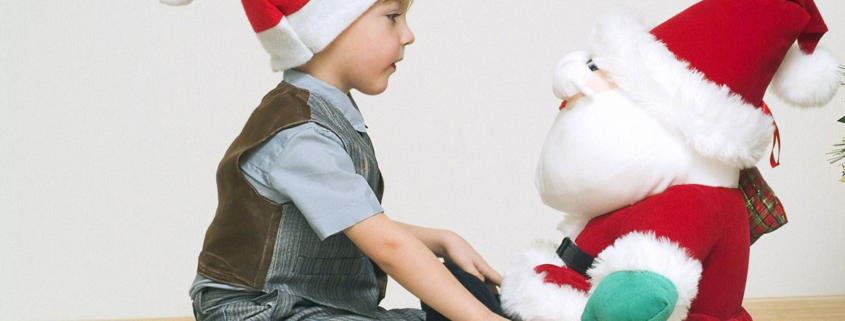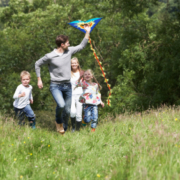Make A Plan to Avoid Santa Trauma
The holidays can be a difficult time for children with autism spectrum disorder. Difficulties can arise from changes in schedules, blinking lights, shiny objects, crowds, or the man with a hairy face that only comes once a year in a big red suit and loudly proclaims, “Ho Ho Ho.” Santa Claus can be intimidating for any child. As a parent of a child with autism, make a plan to avoid Santa trauma.
Santa Trauma
Santa trauma is not a “clinical” term. That is, Santa trauma is not a diagnosis. But, many of us have seen children cry, reach out for their parents in terror, or look petrified as they sit in Santa’s lap to take a picture. We have also seen stressed adults escorting children to sit in Santa’s lap despite the child’s apparent fear.
I define Santa trauma as significant emotional or behavioral reactions that happen when children (or adults) encounter Santa Claus. Santa trauma can happen while waiting in a line to sit in Santa’s lap, walking by Santa at the mall, seeing Santa on TV, or actually being forced to sit in Santa’s lap to take a picture. You or your child can experience Santa trauma. You may no longer have your child sit in Santa’s lap because the last time you tried it, your child had a meltdown and you are traumatized as a result. On the other hand, you may have wanted your child to have a big smile in a picture with Santa and he showed no reaction. Consider how to make a plan to avoid Santa trauma.
Santa Trauma From The Sensory or Social Experience
A child with autism spectrum disorder may have an intense response to Santa or he may look away because he has no social interest in Santa. Santa Claus provides a unique sensory and social experience because he only comes around once a year. Santa trauma can be triggered by Santa’s novelty or sensory overload from Santa’s big red textured suit, white furry beard, his big black boots and belt buckle, or his hearty “Ho Ho Ho.”
Make A Plan To Avoid Santa Trauma
You may need to make a carefully thought out plan to avoid Santa trauma. You know your child best. Think about how you can avoid or address a potential meltdown from a Santa encounter. Here are some tips if you do plan to introduce your child to Santa in person.
- First, introduce your child to Santa in pictures, books, cartoons, stuffed animals, videos, or from a distance.
- Talk about Santa in a way that is consistent with your family’s values.
- Consider a sensory-friendly version of Santa through events for children with special needs.
- Praise your child for any Santa approach such as looking at, going near, saying or approximating the word “Santa.”
- Have a family member dress up as Santa for a controlled introduction in a familiar environment.
- If you go to an event to take a picture, check your child’s reaction to Santa from a distance and the wait time before standing in line.
- Make sure your child is well-rested and fed before the initial encounter with Santa in public. Have their favorite items readily available.
- Do not force your child to sit in Santa’s lap if he is afraid or is on the verge of a meltdown.
- Consider modeling a high-five or a fist bump if sitting in Santa’s lap is too frightening.
- Be ready to leave the event if your child is upset by Santa, then do something you know calms your child.
- Don’t feel pressured to visit or introduce Santa if you feel your child is not ready.
Make a plan to avoid Santa trauma. It does not have to happen to you or your child during this holiday season.










Leave a Reply
Want to join the discussion?Feel free to contribute!